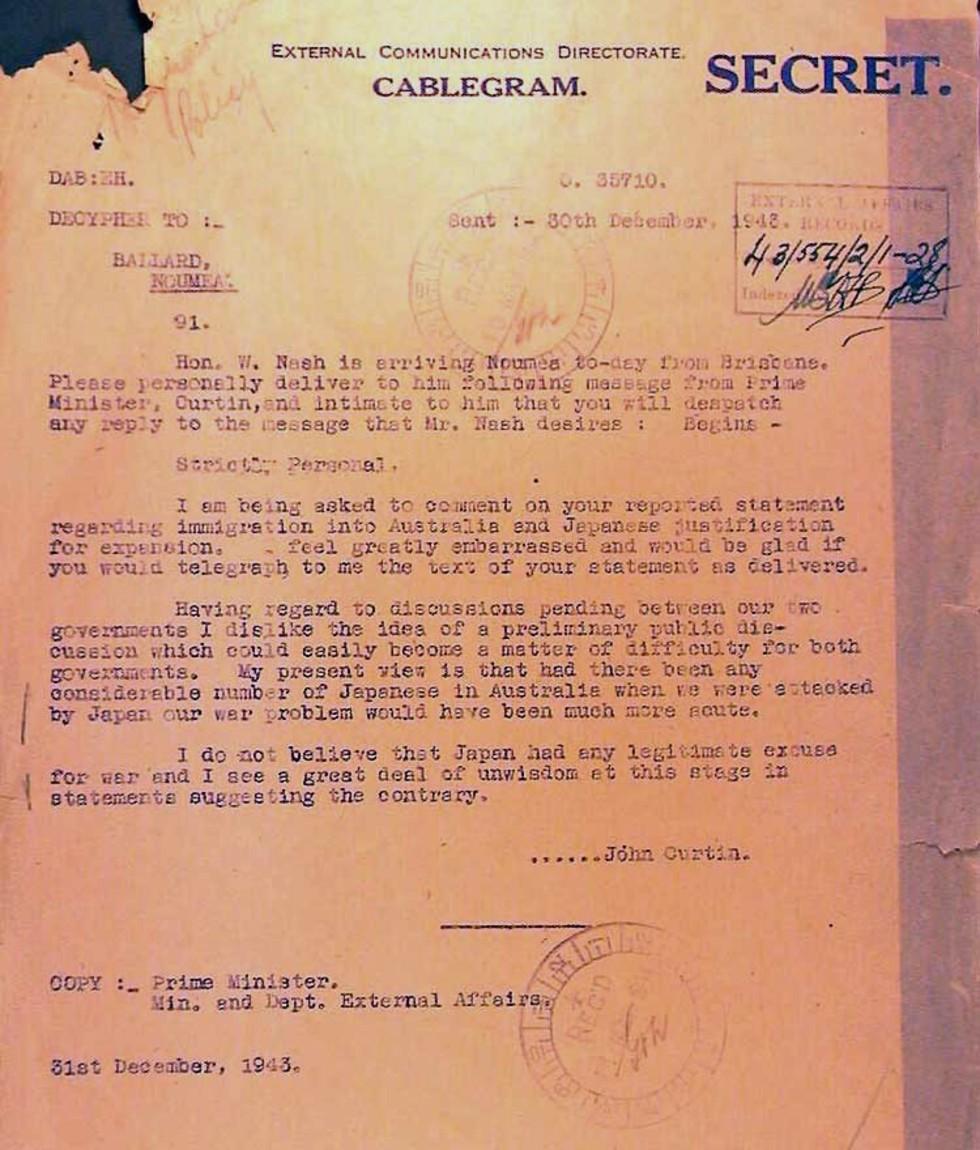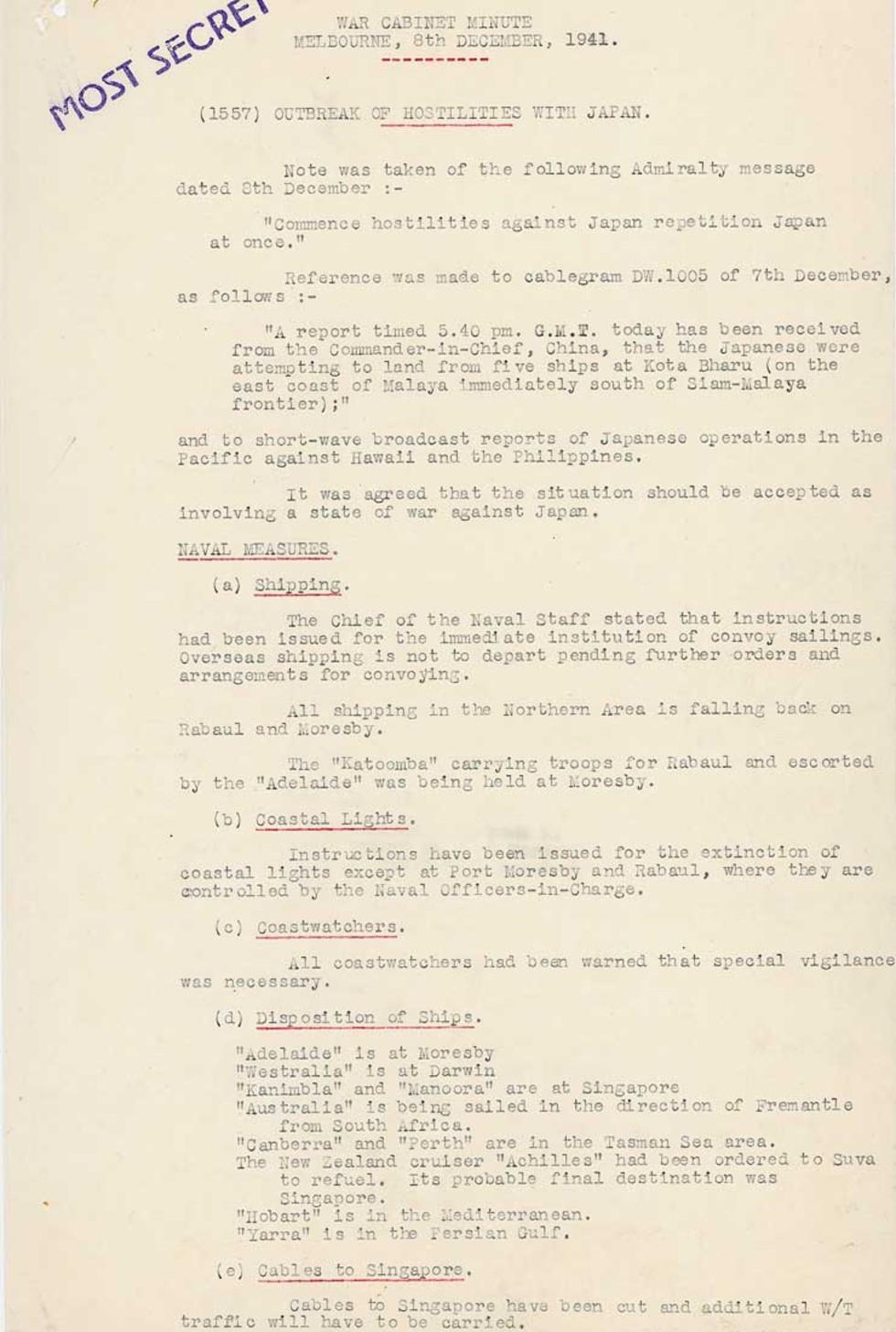


Source: Timetoast
In December 1941 Japan, already at war with China, attacked British, Dutch and American territories in Asia and the Pacific. By June 1942, Japanese conquests encompassed a vast area of south-east Asia and the western Pacific. Under Japanese occupation, prisoners of war and enslaved civilians were forced to work for their captors in harsh and often inhuman conditions. Read through the resources below to learn more about Japan's reasons for joining World War II and their role in the war.
Japanese expansion in East Asia began in 1931 with the invasion of Manchuria and continued in 1937 with a brutal attack on China. On September 27, 1940, Japan signed the Tripartite Pact with Germany and Italy, thus entering the military alliance known as the "Axis." Seeking to curb Japanese aggression and force a withdrawal of Japanese forces from Manchuria and China, the United States imposed economic sanctions on Japan. Faced with severe shortages of oil and other natural resources and driven by the ambition to displace the United States as the dominant Pacific power, Japan decided to attack the United States and British forces in Asia and seize the resources of Southeast Asia. Read through this article to learn more.
Japan’s actions from 1852 to 1945 were motivated by a deep desire to avoid the fate of 19th-century China and to become a great power. Read through this article to learn more.
On December 7, 1941, Japan staged a surprise attack on Pearl Harbor, decimating the US Pacific Fleet. When Germany and Italy declared war on the United States days later, America found itself in a global war. While Japan’s deadly assault on Pearl Harbor stunned Americans, its roots stretched back more than four decades. Read through this article to learn more.
This article takes an in-depth look at the reasons why Japan militarised and joined World War II.
On December 7, 1941, the Japanese military launched a surprise attack on the United States Naval Base at Pearl Harbor, Hawaii. Since early 1941 the U.S. had been supplying Great Britain in its fight against the Nazis. It had also been pressuring Japan to halt its military expansion in Asia and the Pacific. With the Japanese attack on Pearl Harbor, the U.S. could no longer avoid an active fight. Read through this fact sheet to learn more.
Beginning in the 1930s, Japan aggressively expanded the territories under its influence, taking over parts of China, invading territories claimed by the Soviet Union, and fighting across the Pacific during World War II. Read through this website to learn more.
Japan attacked the U.S Pacific Fleet at its base at Pearl Harbor on the 7th of December 1941, but what led to that decision? Why did the Japanese attack the USA? - The answer is oil. Read through this resource to learn more.
This article looks at Japan's history from 1853 right through to after World War II.
In December 1941 Japan attacked the United States at Pearl Harbor, Hawai'i, causing the U.S. to enter World War II. Read through this list for an overview of some of the major battles from this theatre of war.
Shifting Tides: Australia and the Pacific in the Second World War is designed to introduce students to significant campaigns in the war against Japan in Asia and the Pacific, as well as the impact on Australia. It includes lots of great resources to help you with your study of World War II in the Pacific.
How did American intelligence fail to give warning of the devastating Japanese attack on Pearl Harbor, nearly three years into World War Two? According to Bruce Robinson, the conspiracy theorists have got it all wrong.


A secret cablegram for W Nash from Prime Minister John Curtin.

This is the record of discussions and decisions of a meeting of the Australian War Cabinet held in Melbourne on 8 December 1941. Stamped 'MOST SECRET', the record includes the Cabinet's decisions on the naval, army and air force measures to be put in place now that Australia was at war with Japan. It also canvasses the strategic situation in Asia, the actions to be taken in the Australian region, the need to accelerate munitions production, the protection of shipping, and the possibility of Japanese attacks on Australia and its territories.

In a national broadcast Prime Minister Curtin announces that Australia is now at war with Japan.
An instrumental version of 'Advance Australia Fair’ begins the recording. It is followed by the voice of a male presenter who solemnly introduces the prime minister. Notice his standard English accent which contrasts with Curtin’s unmistakable Australian accent.
Curtin appeals directly to the listener by addressing the ‘men and women of Australia’. It was thought that Curtin was the first to use this form of address which Gough Whitlam, another ALP prime minister, adopted in tribute to Curtin. Apparently Robert Menzies, the Liberal prime minister who preceded Curtin, also used this form of address in speeches.
In the beginning of the speech Curtin details why Australia is at war and how the Allies had attempted to negotiate with Japan to avoid war. The language then becomes more emotive as he aligns the actions of Japan ‘like an assassin in the night’ with that of the approach of Hitler. He beseeches the Australian public to serve the nation which is in peril and facing its ‘darkest hour’. The inference, though not stated, is the threat of invasion. Darwin was bombed for the first time several months later on 19 February 1942. It is now thought that the Japanese were not intending to invade Australia as such, but to seize raw materials and to secure a perimeter.
Curtin aims to reassure listeners by describing the steps being taken by the Australian government to prepare and plan for ‘whatever eventuality’. Curtin exhorts the listeners to support the efforts of the government: ‘The call is to you, for your courage, your physical and mental ability, your inflexible determination that we, as a nation of free people, shall survive’.
The history of Australia as a British colony is inferred by such references to the 150 years in ‘this spacious land’ without any reference to the original inhabitants. Australia is a citadel for the ‘British-speaking’ and ‘a place where civilisation will persist’. The speech concludes with a quote from the English poet Swinburne.

By February 1941, when the first contingent of the 8th Division AIF reached Singapore, there were ominous signs of Japanese intentions in the region. That month, General Tomoyuki Yamashita (left) was in Germany studying war strategy and presented a Samurai sword to Field Marshal Walter von Brauchitsch, Commander-in-Chief of the German Army. Yamashita later commanded the Japanese XXV Army in its invasion of Malaya and Singapore.


 The bombing of Pearl Harbor
by
The bombing of Pearl Harbor
by
 The Pacific War : from Pearl Harbor to Hiroshima
by
The Pacific War : from Pearl Harbor to Hiroshima
by